|
Books Should Be Free Loyal Books Free Public Domain Audiobooks & eBook Downloads |
|
|
Books Should Be Free Loyal Books Free Public Domain Audiobooks & eBook Downloads |
|
History Books |
|---|
|
Book type:
Sort by:
View by:
|
By: A. Mouritz (1861-1943) | |
|---|---|
 “The Flu”: A Brief History of Influenza in U. S. America, Europe, Hawaii
“The Flu”: A Brief History of Influenza in U. S. America, Europe, Hawaii
PREFACE This Booklet has been written and compiled for the use of any student or layman who seeks concise and clear information on the history of Influenza. Brief and salient facts are set forth relating to “Flu” epidemics and pandemics: other collateral features have also been discussed, connected with or bearing upon this subject. Honolulu, Hawaii, U. S. A., 1921. - A. Mouritz Notes: Much of the material in "The Flu" is still relevant today, like pandemic terminology, thoughts about causes and micro-organisms, the flu's relationship with pneumonia, the impact on society, and approaches to treatments "The Flu" is included in the Surgeon General's Library at the U... | |
By: Aaron Smith (?-1862) | |
|---|---|
 The Atrocities of the Pirates
The Atrocities of the Pirates
In 1822, Aaron Smith, a young English seaman, was taken captive by Cuban pirates when his ship was boarded en route from Jamaica to England. Forced to work as a navigator and as a member of pirate boarding parties, he witnessed unspeakable acts of murder and torture. Befriended by a young Cuban woman, he managed to escape with his life, but was arrested as a pirate in Havana and sent back to England in chains. There, he found himself on trial for his life at the Old Bailey courthouse—with the attorney general himself leading the prosecution. Smith's dramatic account of his personal experience is a brutally honest, unromanticized [sic] look at piracy in the 19th century. | |
By: Abdullah Ibn al-Muqaffaʿ (724-759) | |
|---|---|
 Fables of Pilpay
Fables of Pilpay
These moralistic stories within stories date back to the Sanskrit text Panchatantra . They were first translated into Arabic by a Persian named Ruzbeh who named it Book of Kalilah and Dimna and then by Abdullah Ibn al-Muqaffa and later Joseph Harris in 1679 and then remodeled in 1818. Max Mueller noted that La Fontaine was indebted to the work and other scholars have noted that Jeanne-Marie LePrince de Beaumont and John Fletcher were both familiar with the fables. The Fables of Pilpay are a series of inter-woven fables, many of which deploy metaphors of anthropomorphized animals with human virtues and vices. | |
By: Abigail Mott (1766-1851) | |
|---|---|
 Narratives of Colored Americans
Narratives of Colored Americans
Abigail Mott was a Quaker and abolitionist from New York who, along with fellow Quaker M. S. Wood, has compiled a provocative collection of stories of “Colored Americans.” They range from well-known figures such as Phillis Wheatley and Sojourner Truth to the common men and women who give poignant insights of their life. Selections consist of short anecdotes, essays, stories, letters and poetry. Many have strong religious and spiritual themes. - Summary by Larry Wilson | |
By: Abner Doubleday (1819-1893) | |
|---|---|
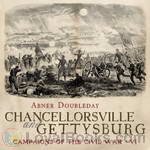 Chancellorsville and Gettysburg
Chancellorsville and Gettysburg
Abner Doubleday began the Civil War as a Union officer and aimed the first cannon shot in response to the bombardment opened on Ft. Sumter in 1861. Two years later, after a series of battles (including Antietam, where he was wounded), Doubleday took over a division in the Army of the Potomac's 1st Corps.These are his memoirs of service in two of the War's great campaigns. At Chancellorsville, a very promising start made by General Hooker against Lee's Confederate forces fell to a defeat when, in... | |
By: Abraham Lincoln (1809-1865) | |
|---|---|
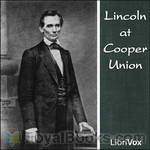 Lincoln at Cooper Union
Lincoln at Cooper Union
On 27 February 1860, Abraham Lincoln gave this address at the Cooper Union in New York City. When he gave the speech, Lincoln was considered by many to be just a country lawyer. After he gave the speech, he soon became his party’s nominee for president. | |
By: Abraham Tomlinson | |
|---|---|
 The Military Journals of Two Private Soldiers, 1758-1775
The Military Journals of Two Private Soldiers, 1758-1775
“Perceiving that much of the intrinsic value of these Journals would consist in a proper understanding of the historical facts to which allusions are made in them, I prevailed upon Mr. Lossing, the well-known author of the “Pictorial Field-Book of the Revolution” to illustrate and elucidate these diaries by explanatory notes. His name is a sufficient guaranty for their accuracy and general usefulness” | |
By: Adolphus Ward (1837-1924) | |
|---|---|
 Counter-Reformation
Counter-Reformation
The Counter-Reformation, also called the Catholic Reformation, and remembered for its infamous Inquisition, was the period of Catholic resurgence which was initiated in response to the Protestant Reformation. Adolphus Ward writes, that it was "a movement pursuing two objects...the regeneration of the Church of Rome, and the recovery of the losses inflicted upon her by the early successes of Protestantism...The onset of the combat is marked by the formal establishment of the Jesuit Order as a militant... | |
By: Agnes Arber (1879-1960) | |
|---|---|
 Herbals, Their Origin and Evolution: A Chapter in the History of Botany
Herbals, Their Origin and Evolution: A Chapter in the History of Botany
Eminent British botanist Agnes Arber provides an authoritative history of printed Herbals -- books widely used in early modern Europe to catalogue the uses of different kinds of plants. While Herbals often reflected pre-scientific and magical beliefs about the properties of plants, Arber's work reveals that they were also critical to the early development of botany and medicine as empirical sciences. A classic in the history of science. - Summary by Josh Leach | |
By: Agnes C. Laut (1871-1936) | |
|---|---|
 Chronicles of Canada Volume 22 - Pioneers of the Pacific Coast: A Chronicle of Sea Rovers and Fur Hunters
Chronicles of Canada Volume 22 - Pioneers of the Pacific Coast: A Chronicle of Sea Rovers and Fur Hunters
This, volume 22 of the Chronicles of Canada series, describes the exploration of the Canadian Pacific coast, British Columbia, and Alaska. It includes accounts of Bering, Cook, Vancouver, Mackenzie, Fraser, and Thompson. | |
 Chronicles of Canada Volume 23 - The Cariboo Trail: A Chronicle of the Gold-fields of British Columbia
Chronicles of Canada Volume 23 - The Cariboo Trail: A Chronicle of the Gold-fields of British Columbia
Between the California and Yukon/Klondike gold rushes was the Cariboo Gold Rush in what would become northern British Columbia. The first discovery was made in 1859, but the rush didn't get underway in earnest until 1861. This short work documents the story of this lesser-known era and how it directly affected the development of British Columbia. | |
 Canada: the Empire of the North
Canada: the Empire of the North
CANADA, THE EMPIRE OF THE NORTHBy Agnes C. LautPREFACETo re-create the shadowy figures of the heroic past, to clothe the dead once more in flesh and blood, to set the puppets of the play in life's great dramas again upon the stage of action,--frankly, this may not be formal history, but it is what makes the past most real to the present day. Pictures of men and women, of moving throngs and heroic episodes, stick faster in the mind than lists of governors and arguments on treaties. Such pictures may not be history, but they breathe life into the skeletons of the past... | |
By: Agnes Edwards (1888-1954) | |
|---|---|
 Old Coast Road From Boston to Plymouth
Old Coast Road From Boston to Plymouth
A delightful trip from Boston through a dozen South Shore towns to Plymouth, stopping in each to explore a bit of the local history and 'modern' highlights. Written in 1920, it's a great journey through the past. | |
By: Agnes Ethel Conway (1885-1950) | |
|---|---|
 The Book of Art for Young People
The Book of Art for Young People
This is a charming book on Art History for children (and everyone else). Each chapter focuses on a great painting, reproduced in color in the original text. The authors explain the story behind the paintings, as well as the life, times, and techniques of the artists. | |
By: Agnes Mary Frances Robinson (1857-1944) | |
|---|---|
 Short History of France: From Caesar's Invasion to the Battle of Waterloo
Short History of France: From Caesar's Invasion to the Battle of Waterloo
After the Roman conquest, the Celtic Gauls adopted Roman culture and speech. The Germanic invasions ultimately transformed France into a Catholic feudal society. In this short history, Mary Duclaux traces the emergence of towns, the rise of the French monarchy, the calamitous Hundred Years' War and the Wars of Religion. We meet Joan of Arc, Charles VII, the gallant Henry IV, and the Sun King, Louis XIV, who drove France to the brink of bankruptcy. In the second half of the book Duclaux gives us the... | |
By: Agnes Strickland, Elisabeth Strickland (1796-1874) | |
|---|---|
 The Lives of the Queens of England Volume 3
The Lives of the Queens of England Volume 3
The Lives of the Queens of England is a multi-volumed work attributed to Agnes Strickland, though it was mostly researched and written by her sister Elizabeth. These volumes give biographies of the queens of England from the Norman Conquest in 1066. Although by today's standards, it is not seen as a very scholarly work, the Stricklands used many sources that had not been used before.Volume three includes the biographies of Isabella of Valois, Joanna of Navarre, Katherine of Valois, Margaret of Anjou, Elizabeth Woodville and Anne of Warwick. (Introduction by Ann Boulais) | |
By: Agnes von Blomberg Bensly | |
|---|---|
 Our Journey to Sinai
Our Journey to Sinai
Fortress-walled Saint Catherine's monastery on the Sinai peninsula has been a pilgrimage site since its founding by the Byzantine Emperor Justinian in the 6th century. According to tradition, the monastery sits at the base of the mountain where Moses received the Tablets of the Law. Set in rugged country, accessible in times past only by a many days journey by camel across barren desert, the monastery survived intact through the centuries, and, as a result, became a rich repository of religious history—told through its icons, mosaics, and the books and manuscripts in the monastery library... | |
By: Alban Butler (1711-1773) | |
|---|---|
 Lives of the Saints, With Reflections for Every Day in the Year
Lives of the Saints, With Reflections for Every Day in the Year
Compiled from the much larger 12 book set of "Butler's Lives of the Saints", this volume contains short biographies of the Saints, for each day of the year, followed by a reflection for each entry. | |
By: Albert A. Young | |
|---|---|
 Stories from the Adirondacks
Stories from the Adirondacks
A collection of five stories all of which take place in the Adirondack Mountains of upstate New York, and most which contain elements of some mystery hidden deep within the forests. - Summary by Roger Melin | |
By: Albert Ernest Jenks | |
|---|---|
 The Bontoc Igorot
The Bontoc Igorot
The Bontoc Igorotby Albert Ernest JenksPREFACEAfter an expedition of two months in September, October, and November, 1902, among the people of northern Luzon it was decided that the Igorot of Bontoc pueblo, in the Province of Lepanto-Bontoc, are as typical of the primitive mountain agriculturist of Luzon as any group visited, and that ethnologic investigations directed from Bontoc pueblo would enable the investigator to show the culture of the primitive mountaineer of Luzon as well as or better than investigations centered elsewhere... | |
By: Albert Keim (1876-1947) | |
|---|---|
 Louis Pasteur
Louis Pasteur
Louis Pasteur famously said, "In the fields of observation chance favors only the prepared mind." Pasteur brought to the study of chemistry, microbiology, and applied immunology, a mind open, innovative, and insightful. Born of peasant stock in the French Jura, he worked with dogged determination all his life and often in the face of strenuous opposition. Through an unbroken succession of rigorously designed and meticulously performed experiments, Pasteur developed veterinary vaccines and halted grievous losses in the French wine, silk, and dairy industries... | |
By: Alexander Aaronsohn (1888-1948) | |
|---|---|
 With the Turks in Palestine
With the Turks in Palestine
While Belgium is bleeding and hoping, while Poland suffers and dreams of liberation, while Serbia is waiting for redemption, there is a little country the soul of which is torn to pieces—a little country that is so remote, so remote that her ardent sighs cannot be heard.It is the country of perpetual sacrifice, the country that saw Abraham build the altar upon which he was ready to immolate his only son, the country that Moses saw from a distance, stretching in beauty and loveliness,—a land of promise never to be attained,—the country that gave the world its symbols of soul and spirit... | |
By: Alexander Baltzly | |
|---|---|
 Is War Diminishing?
Is War Diminishing?
A study In the prevalence of war in Europe from 1400 to the present day. This small book summarises historical periods of peace compared to periods of war, as concluded by consultation with other historians, and seeks to answer the question as to if the incidence and duration of periods of national conflict were becoming more intense or not, and how the periods of war may correlate to other social trends. - Summary by Leon Harvey | |
By: Alexander Berkman (1870-1936) | |
|---|---|
 Bolshevik Myth
Bolshevik Myth
The Bolshevik Myth is a book by Alexander Berkman who with his partner Emma Goldman was deported from the USA under the 1918 Anarchist Exclusion Act and shipped to the young Soviet Russia. He describes his experiences in Bolshevik Russia from 1920 to 1922, where he saw the aftermath of the Russian Revolution of 1917. Written in the form of a diary, The Bolshevik Myth describes how Berkman's initial enthusiasm for the revolution faded as he became disillusioned with the Bolsheviks and their suppression of all political dissent... | |
By: Alexander Dunlop Lindsay (1879-1952) | |
|---|---|
 Philosophy of Immanuel Kant
Philosophy of Immanuel Kant
Born in Scotland, Alexander Dunlop Lindsay was a teacher of philosophy at a number of universities in England in the early 1900s. This brief commentary on Kant's philosophy is a work that focuses solely on some of the main ideas Kant put forth in the three Critiques. Although not comprehensive, the narrative style of this volume makes it a pleasant read and will be a valuable "break-in" point the complex philosophy of Immanuel Kant. | |
By: Alexander Hamilton (1755/1757-1804) | |
|---|---|
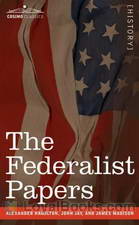 The Federalist Papers
The Federalist Papers
In order to promote the ratification of the United States Constitution in the late 1780s, Alexander Hamilton, James Madison and John Hay wrote a series of 85 articles and essays explaining their reasons to support the constitution. Most of these articles were published in The Independent Journal and The New York Packet and they later became known as “The Federalist Papers.” In reading the articles, one will encounter very interesting issues like Hamilton’s opposition to including the Bill of Rights in the Constitution and why he thinks a Union is better than a Confederation... | |
By: Alexander Kinglake | |
|---|---|
 Eothen, or Impressions of Travel brought Home from the East
Eothen, or Impressions of Travel brought Home from the East
A classic of Victorian travel writing, Kinglake’s book describes his journey through the Ottoman empire to Cairo, and his residence there in time of plague. | |
By: Alexander Pushkin (1799-1837) | |
|---|---|
 Daughter of the Commandant
Daughter of the Commandant
"The Daughter of the Commandant" (better known as "The Captain's Daughter") is a historical novel by the Russian writer Alexander Pushkin, and is considered to be his finest prose work. The novel is a romanticized account of Pugachev's Rebellion in 1773-1774. The 17-year-old Pyotr Andreyich is sent by his father to military service in a remote Russian outpost, where he leans honor and love while being caught up in a violent uprising of tribal groups against the imperial government. | |
By: Alexandre Dumas (1802-1870) | |
|---|---|
 The Three Musketeers
The Three Musketeers
The Three Musketeers follows the adventures of the young Gascon nobleman, D’Artagnan and his three trusted friends who served as musketeers in the king’s regiment – Athos, Porthos & Aramis. Written by Alexandre Dumas, the book was a bestseller during the time of its publication and it remains so even today. It follows the timeless theme of friendship and bravery. The main protagonist of the story is D’Artagnan who travels to Paris to realize his dreams of becoming one of the musketeers for the king... | |
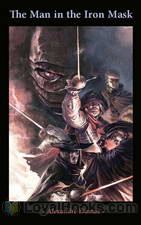 The Man in the Iron Mask
The Man in the Iron Mask
The Man in the Iron Mask by Alexandre Dumas is part of the novel The Vicomte of Bragelonne: Ten Years After, published in serial form between 1857-50. It is also the last of the D'Artagnan stories written by Dumas and the three musketeers are the real heroes of the story, though the title is given to the man in the iron mask. The story opens with Aramis (one of the musketeers who is now a priest) taking the last confession of a prisoner who is condemned to be executed soon. His confession comes as a thunderbolt to the former musketeer... | |
 Twenty Years After
Twenty Years After
First serialized from January to August, 1845, Twenty Years After is the second book in The D’Artagnan Romances, and follows the gallant adventures of the musketeers, as they are once again summoned to alleviate the various threats that lurk in the political scene of France, as the country is threatened by a possible uprising. Enriched with exciting and well-developed characters, the novel adds more detail to its familiar characters, as the musketeers have matured and are portrayed in a more introspective light... | |
 Celebrated Crimes
Celebrated Crimes
Dumas's 'Celebrated Crimes' was not written for children. The novelist has spared no language -- has minced no words -- to describe the violent scenes of a violent time.In some instances facts appear distorted out of their true perspective, and in others the author makes unwarranted charges. The careful, mature reader, for whom the books are intended, will recognize, and allow for, this fact.The first volume comprises the annals of the Borgias and the Cenci. The name of the noted and notorious Florentine family has become a synonym for intrigue and violence, and yet the Borgias have not been without stanch defenders in history... | |
 The Vicomte De Bragelonne
The Vicomte De Bragelonne
After The Three Muskateers and Twenty Years After the adventurous story of Athos, Porthos, Aramis and D'Artagnan continues!The Vicomte of Bragelonne: Ten Years Later (French: Le Vicomte de Bragelonne ou Dix ans plus tard) is the last of the Musketeer novels. It is usually divided into four volumes and this first volume contains chapters 1-75. | |
 The Black Tulip
The Black Tulip
The Black Tulip, written by Alexandre Dumas père and published in 1850, is a historical novel placed in the time of Tulipmania in the Netherlands. The novel begins with the 1672 politically motivated mob lynching of the de Witt brothers and then follows the story of Cornelius van Baerle, godson of Cornelius de Wit. Cornelius Van Baerle has joined the race to breed a truly black tulip – and to win the prize of 100,000 guilders, as well as fame and honour. As he nears his goal he is jailed and then of course rescued – by the beautiful Rosa, daughter of the jailer. | |
 Louise de la Valliere
Louise de la Valliere
After The Three Muskateers and Twenty Years After the adventurous story of Athos, Porthos, Aramis and D'Artagnan continues! The Vicomte of Bragelonne: Ten Years Later (French: Le Vicomte de Bragelonne ou Dix ans plus tard) is the last of the Musketeer novels. It is usually divided into four volumes and this third volume contains chapters 141-208. | |
 Ten Years Later
Ten Years Later
After The Three Muskateers and Twenty Years After the adventurous story of Athos, Porthos, Aramis and D'Artagnan continues!The Vicomte of Bragelonne: Ten Years Later (French: Le Vicomte de Bragelonne ou Dix ans plus tard) is the last of the Musketeer novels. It is usually divided into four volumes and this second volume contains chapters 76-140. | |
 Chicot the Jester
Chicot the Jester
This sequel to Dumas' “Marguerite de Valois” begins four years after the sudden death of King Charles IX and succession of his brother Henry III. The reign of King Henry III was plagued with rebellion and political intrigue due to the War of the Three Henries, where his regency was challenged by King Henry of Navarre (leader of the Huguenots) and Henry I, Duke of Guise (leader of the Catholic League). Dumas weaves two main storylines through this turbulent backdrop: one of the love ignited between le Comte de Bussy and la Dame de Monsoreau, and another of the friendship between King Henry III and his truly unique jester, Chicot (Jean-Antoine d'Anglerais). | |
By: Alexandre Exquemelin (c. 1645-1707) | |
|---|---|
 The Pirates of Panama
The Pirates of Panama
This volume was originally written in Dutch by John Esquemeling, and first published in Amsterdam in 1678 under the title of De Americaeneche Zee Roovers. It immediately became very popular and this first hand history of the Buccaneers of America was soon translated into the principal European languages. The first English edition was printed in 1684. Esquemeling served the Buccaneers in the capacity of barber-surgeon, and was present at all their exploits. Little did he suspect that his first hand observations would some day be cherished as the only authentic and true history of the Buccaneers and Marooners of the Spanish Main... | |
By: Alexis de Tocqueville (1805-1859) | |
|---|---|
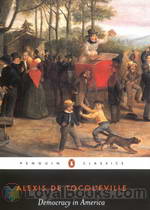 Democracy in America
Democracy in America
Arguably, one of the most influential and insightful pieces of work concerned with American political life, Democracy in America directs itself towards American politics and society, and is considered to be one the best books written on the subject. Published in 2 volumes, in 1835 and 1840, Tocqueville records his findings after studying the thriving nation in his nine month exploratory journey. The young French aristocrat first came to America on an official assignment to study the American penal system, but instead used this as a pretext to study American society... | |
By: Alfred Arthur Reade | |
|---|---|
 Tea and Tea Drinking
Tea and Tea Drinking
Not a complete history of tea, but a pleasant diversion concerning tea, the pleasures found in its drinking, effects, benefits, cautions, etc. Sprinkled with poetry and excerpts from historical personages and the occasional sermon. - Summary by KevinS | |
By: Alfred de Musset (1810-1857) | |
|---|---|
 The Confession of a Child of the Century
The Confession of a Child of the Century
In this autobiographic novel, an aging man reflects on his past. We are witness to the relationships he has along the way, his mistakes, and finally- in the most unexpected and honorable way- the sudden developement of his belief in god. | |
By: Alfred Edward Taylor (1869-1945) | |
|---|---|
 Thomas Hobbes
Thomas Hobbes
This work is a look at the life and ideas of Thomas Hobbes, English philosopher of the seventeenth century. The most important ideas are found in his famous work Leviathan. Taylor looks at such concepts of Hobbes as the contract, naturalism, sovereignty, natural laws, church and state, absolutism, and political obligation, etc. | |
By: Alfred John Church (1829-1912) | |
|---|---|
 Henry the Fifth
Henry the Fifth
A brief history of the life Henry the Fifth. - Summary by KevinS | |
 Stories from Virgil
Stories from Virgil
Alfred J. Church created 26 stories from the original Greek version of Virgil's Aeneid. He included well-known ones, such as "The Horse of Wood" and "The Love and Death of Dido," as well as many others perhaps less well-known, such as "King Evander" and "The Funeral Games of Anchises." | |
By: Alfred William Benn (1843-1915) | |
|---|---|
 History of Modern Philosophy
History of Modern Philosophy
This book is a brief, but cogent discussion of Western philosophy-- from Francis Bacon and Giordano Bruno through Descartes, Spinoza, and Leibniz, Hume, Berkeley and Kant, the German idealists and Hegel, and ending with such nineteenth century luminaries as Mill, Spencer, and Nietzsche. Enchanted with Copernicus, Bruno goes to the stake for positing an infinity of inhabited worlds. Descartes, a professed skeptic, manages to justify everything the Jesuits taught him at La Flèche, while Spinoza, in mystical awe, envisions a pantheistic cosmos in which thought and extension are one and the same thing--God... | |
By: Alfredo d'Escragnolle Taunay (1843-1899) | |
|---|---|
 Innocencia: a story of the prairie regions of Brazil
Innocencia: a story of the prairie regions of Brazil
The story of Innocencia, an 18-year-old girl who lives in the prairies of Brazil, is a twist on the traditional love triangle. The plot has been compared to the more famous "Paul and Virginie" and "Romeo and Juliet", but it takes place on the dropback of the loneliness of the sparsely populated backregions in 19th century Brazil, visited by a German naturalist in search of new species of insects, Dr. Meyer, who unsuspectedly finds himself caught in a complicated maze of jealousy, love and distrust. Inocencia was the first book by a Brazilian writer to be translated into English, as the translator states in his preface. - Summary by Leni | |
By: Alice Morse Earle (1851-1911) | |
|---|---|
 Home Life in Colonial Days
Home Life in Colonial Days
CHAPTER I HOMES OF THE COLONISTS When the first settlers landed on American shores, the difficulties in finding or making shelter must have seemed ironical as well as almost unbearable. The colonists found a land magnificent with forest trees of every size and variety, but they had no sawmills, and few saws to cut boards; there was plenty of clay and ample limestone on every side, yet they could have no brick and no mortar; grand boulders of granite and rock were everywhere, yet there was not a single facility for cutting, drawing, or using stone... | |
 Child Life in Colonial Days
Child Life in Colonial Days
The accounts of oldtime child life gathered for this book are wholly unconscious and full of honesty and simplicity, not only from the attitude of the child, but from that of his parents, guardians, and friends. The records have been made from affectionate interest, not from scientific interest; no profound search has been made for motives or significance, but the proof they give of tenderness and affection in the family are beautiful to read and to know. | |
By: Alice Turner Curtis (1863-??) | |
|---|---|
 A Yankee Girl at Fort Sumter
A Yankee Girl at Fort Sumter
Sylvia Fulton is a ten-years-old girl from Boston who stayed in Charleston, South Carolina, before the opening of the civil war. She loves her new home, and her dear friends. However, political tensions are rising, and things start to change. Through these changes, Silvia gets to know the world better: from Estrella, her maid, she starts to understand what it is to be a slave, from her unjust teacher she learns that not all beautiful people are perfect, and from the messages she carries to Fort Sumter she learns what is the meaning of danger. However, this is a lovely book, written mostly for children. | |
 Little Maid of Province Town
Little Maid of Province Town
Plucky eight year old Anne Nelson, living in Provincetown on the tip of Cape Cod, is determined to bring the Revolutionary War to an end so that she can be reunited with her soldier father. Will she succeed in carrying an important message from Boston to Newburyport, warning the American troops to be prepared, or will she be caught by the English ships patrolling the harbor? | |
By: Allan Fea (1860-1956) | |
|---|---|
 Secret Chambers and Hiding Places
Secret Chambers and Hiding Places
“Secret Chambers and Hiding Places” is a collection of concealments and their uses, almost all within England, although a very few passages and chambers in continental Europe are mentioned, Jacobite hidey holes in Scotland, while the final chapter of the book covers Bonnie Prince Charlie’s wanderings around Scotland, among caves and other hiding places. Most chapters are devoted to historical events; such as the the seventeenth century persecution of roman catholics (with many large houses having specially constructed “priests’ holes”), or various unpopular monarchs and their hiding places... | |
By: Allen French (1870-1946) | |
|---|---|
 Story of Rolf and the Viking's Bow
Story of Rolf and the Viking's Bow
Rolf, a youth in early Christian Iceland, loses first his father, then his property, and finally his freedom to the schemes of a greedy neighbor. Outlawed from Iceland, Rolf travels abroad, meeting with shipwreck, enslavement, Viking berserkers, and many other dangers and adventures. All the while, Rolf searches for a way to prove his father was killed unjustly and win back his own property and freedom. Even more difficult, Rolf must end the cycle of enmity, vengeance, and pride that hangs like a curse over his family. - Summary by Erin Schellhase | |
By: Allen Glasser (1908-1971) | |
|---|---|
 Martian
Martian
The water was evaporated by the ever-shining sun until there was none left for the thirsty plants. Every year more workers died in misery. A stranger from another world comes and experiences the attempts by two different cultures with different languages to understand what the other wants. Not all educated cultures are cordial or sympathetic to new arrivals. This book explores one potential outcome of the meeting of alien races. - Summary by Paul Harvey | |
By: Allen Mawer (1879-1942) | |
|---|---|
 Vikings
Vikings
This is a concise history of the Vikings by Allen Mawer, MA, Professor of English Language and Literature in Armstrong College, University of Durham: late Fellow of Gonville and Caius College, Cambridge. It includes the following chapters: I.Causes of the Viking movement; II.The Viking movement down to the middle of the 9th century; III.The Vikings in England to the death of Harthacnut ; IV.The Vikings in the Frankish Empire to the founding of Normandy ;V. The Vikings in Ireland to the battle of Clontarf ; VI... | |
By: Alvar Núñez Cabeza de Vaca (ca. 1490/1507 - ca.1557/1579) | |
|---|---|
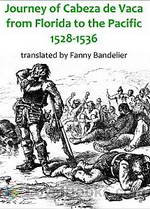 The Journey of Alvar Núñez Cabeza de Vaca
The Journey of Alvar Núñez Cabeza de Vaca
Few stories of shipwreck and survival can equal that of the 16th century Spaniard Alvar Núñez Cabeza de Vaca who, cast ashore near present day (USA) Tampa Bay, Florida, in 1528, survived eight years of hand-to-mouth existence among the Indians of the South and Southwest, and who walked on foot across the plains to the Pacific Coast, arriving in Mexico in 1536. In 1542 he published an account of his adventures, and the present reading is based on Fanny Bandelier’s English translation of that text... | |
By: Ambrose Bierce (1842-1913) | |
|---|---|
|
At the outset of the American Civil War, [the writer Ambrose] Bierce enlisted in the Union Army's 9th Indiana Infantry Regiment....In February 1862 he was commissioned First Lieutenant, and served on the staff of General William Babcock Hazen as a topographical engineer, making maps of likely battlefields. Bierce fought at the Battle of Shiloh (April 1862), a terrifying experience that became a source for several later short stories and the memoir, "What I Saw of Shiloh". In June 1864, he sustained a serious head wound at the Battle of Kennesaw Mountain, and spent the rest of the summer on furlough, returning to active duty in September. He was discharged from the army in January 1865. | |
By: Amelia B. Edwards (1831-1892) | |
|---|---|
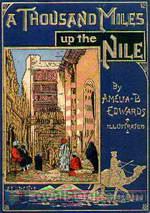 A Thousand Miles up the Nile
A Thousand Miles up the Nile
Known as the Godmother of Egyptology, Amelia Ann Blanford Edwards traveled through Egypt at a time when archeology was in its infancy in that country and literally anyone with a spade or trowel could go exploring through the magnificent, untouched ruins. She was one of a group of amazing Victorian women who ignored the repressive 19th century attitudes toward female scientists and defied society to follow their passion for history. A Thousand Miles up the Nile was first published in 1877. The title refers to the approximate distance from Alexandria to the Second Cataract of the Nile river, a journey that the author undertook over the course of a year in Egypt... | |
By: American and Foreign Anti-Slavery Society | |
|---|---|
 Two American Slavery Documents
Two American Slavery Documents
This recording contains two original documents. 1) Life of James Mars, a Slave Born and Sold in Connecticut, by James Mars . James Mars was born in Connecticut in 1790 and spent the better part of his youth a slave working for various owners—once fleeing to the woods with his family to avoid being relocated to the South. At age twenty-five he became a free man and moved to Hartford, Connecticut, where he became a leader in the local African American community. His memoir is one of the more famous accounts of slave life in early New England... | |
By: Amice MacDonell | |
|---|---|
 Enterprise of the ''Mayflower''
Enterprise of the ''Mayflower''
"Welcome to all! We show the story of how, nearly three hundred years ago, when this country was not so happy as it is now, some people driven by persecution out of England went on a long and dangerous voyage in a ship called the Mayflower, and made for themselves a home across the Atlantic Ocean." Cast List: Stage Directions read by MaryAnnMaster William Brewster: SpiderScientistMaster William Bradford: ToddHWMaster John Carver: aravagarwalMaster John Alden: JamesMcAndrewMaster John Robinson: Alex... | |
 Story of the Armada
Story of the Armada
It's the summer of 1588, and all is not well in England. Citizens are plotting to betray their queen for Spanish gold, and the dreaded Armada is coming closer and closer. It's up to Lord Burleigh and brave Sir Francis Drake to stop them, but will they succeed in convincing Queen Elizabeth that such action is necessary? And when the Spanish ships finally arrive, what will happen to the queen and the citizens of London? Cast List:William Cecil, Lord Burleigh: Tomas Peter Sir Walter Raleigh: Todd Sir Francis Drake: K... | |